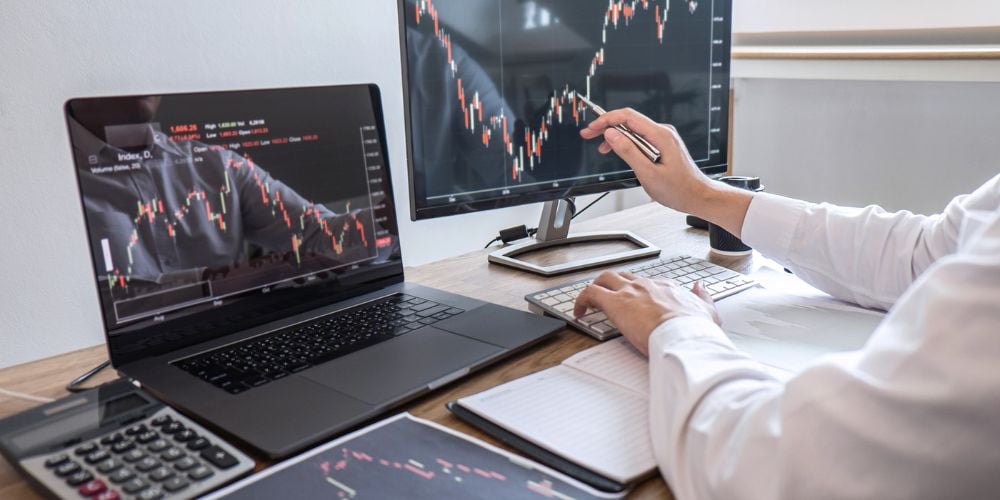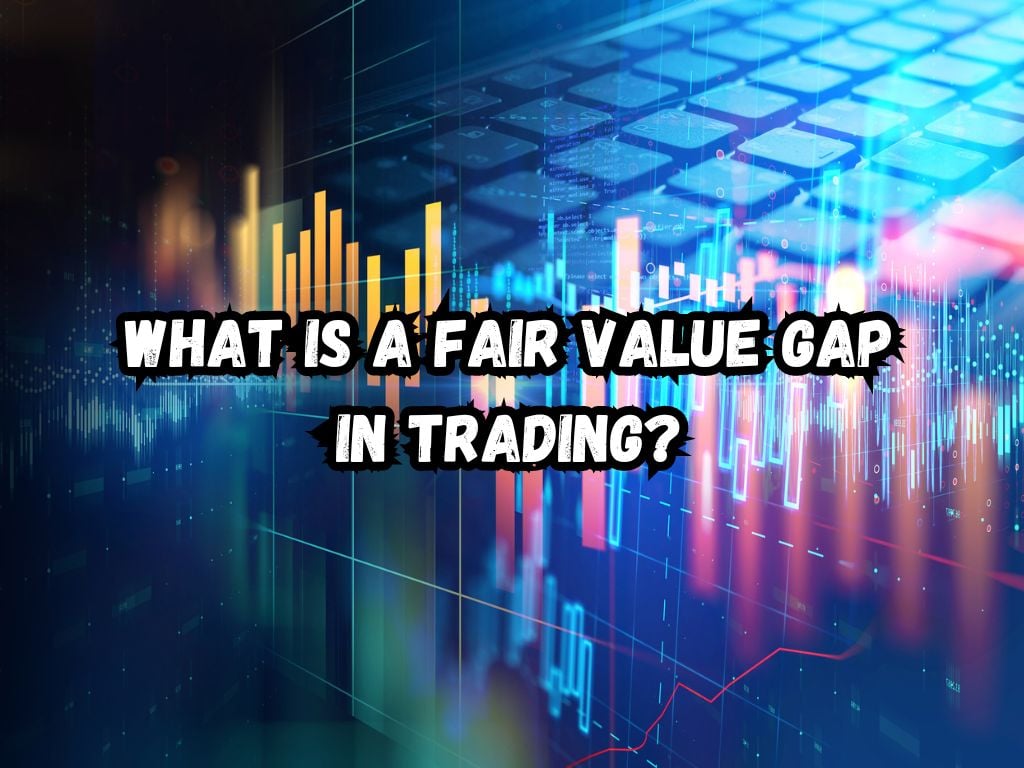In the complicated world of trading, understanding market dynamics is crucial to success. Among these concepts, the fair value gap emerges as a crucial aspect that seasoned and novice traders must grasp.
This comprehensive guide aims to demystify what a fair value gap is in trading, explore its essence, importance in trading and provide strategic insights to leverage this concept to optimize trading decisions.
What is a fair value gap in trade?
When the market price of a security deviates from its estimated fair value, a fair value gap arises.
This gap is essentially the difference between what the market believes the asset is worth and what fundamental analysis indicates its value should be. This indicates a misalignment that savvy traders can exploit.
The meaning of fair value in trade
Fair value acts as a North Star for traders, guiding them to discern whether an asset is over or undervalued by the market.
It represents a theoretical ideal price, a touchstone against which real-time market prices can be evaluated.

Importance of fair value gap in trade
Understanding and identifying fair value gaps provides traders with a lens through which market inefficiencies become apparent.
These gaps highlight opportunities where an asset may be ripe for buying or selling based on its deviation from perceived fair value.
Event identification
Recognizing fair value gaps serves as a cornerstone for spotting investment opportunities.
An asset priced below its fair value may indicate a potential buying opportunity, indicating that the market has undervalued the asset relative to its intrinsic value.
Conversely, an asset trading above its fair value may represent an opportune moment to sell, capitalizing on the market’s overvaluation.
Manifestation of fair value gap
Fair value gaps can materialize through various events and conditions in the market. Rapid price movements following economic reports, unforeseen events or corporate announcements often lead to temporary price gaps between market price and fair value.
Sources of fair value gaps
Various triggers can lead to the creation of fair value gaps. Market reactions to news events, earnings reports or significant shifts in economic indicators can all cause immediate, but possibly temporary, deviations in an asset’s market price from its fair value.
How to detect a fair value gap
Spotting a fair value gap requires diligence and a multi-pronged approach, combining both fundamental analysis and technical indicators to detect differences between market prices and fair values.
Use of Fundamental Analysis
Fundamental analysis forms the cornerstone for calculating an asset’s fair value. Techniques such as Discounted Cash Flow (DCF) are commonly used, which provide a quantitative basis for estimating an asset’s intrinsic value by evaluating its expected future cash flows.
Use of Technical Analysis
While fundamental analysis calculates fair value, technical analysis can help identify market trends and patterns that indicate the presence of fair value gaps.
For example, chart patterns can shed light on impending price corrections or divergences, guiding traders to make informed decisions.

Trading strategies around fair value gap
Using information about fair value gaps allows traders to make strategies, with the aim of exploiting these gaps for potential profits.
A nuanced understanding can guide the timing of trades – when to enter and when to exit.
Gap Trading Strategy
One common strategy is gap trading, in which traders position themselves in anticipation of the market moving to fill the gap—to bring the market price in line with the fair value.
This approach requires astute market observations and a rigorous analysis to accurately predict potential movements.
Risks and Considerations
Trading based on fair value gaps is not without its challenges and risks. Market dynamics are unpredictable, and gaps may not always close as expected.
Thus, a deep understanding and careful consideration is paramount to navigating these waters safely.
Market volatility and unpredictability
The inherent volatility and unpredictability of markets means that relying solely on fair value gaps can be risky.
Gaps may persist longer than expected, or external factors may change the expected course, affecting the profitability of trading strategies based on these gaps.
Frequently Asked Questions
What is a fair value gap in trade?
A fair value gap in trading indicates the difference between the market price of an asset and its calculated fair value, highlighting potential over- or undervaluation by the market.
How is a fair value gap identified?
Identification of a fair value gap combines intrinsic valuation methodologies and technical analysis to contrast a security’s current market price with its estimated fair value, uncovering potential inconsistencies.
How can traders use the Fair Value Gap concept to their advantage?
Traders can take advantage of the Fair Value Gap concept by identifying assets that are undervalued or overvalued by the market, using these insights to make strategic buy or sell decisions based on expected market corrections.
What are the risks involved?
The risks include the market not adjusting as expected, gaps not being filled, or external influences distorting the expected alignment, potentially leading to unforeseen losses.
Mastering the intricacies of the fair value gap can significantly refine a trader’s strategy, providing a robust framework for skillfully navigating the complexities of the financial markets.
Closure
Incorporating an understanding of the fair value gap into trading strategies gives traders a critical edge in the competitive trading landscape.
By aligning trade actions with insights gained from these gaps, traders can make more informed decisions, potentially taking advantage of market inefficiencies for profits.
However, success requires vigilance, rigorous analysis and an appreciation of the risks involved.
Disclaimer for Uncirculars, with a Touch of Personality:
While we love diving into the exciting world of crypto here at Uncirculars, remember that this post, and all our content, is purely for your information and exploration. Think of it as your crypto compass, pointing you in the right direction to do your own research and make informed decisions.
No legal, tax, investment, or financial advice should be inferred from these pixels. We’re not fortune tellers or stockbrokers, just passionate crypto enthusiasts sharing our knowledge.
And just like that rollercoaster ride in your favorite DeFi protocol, past performance isn’t a guarantee of future thrills. The value of crypto assets can be as unpredictable as a moon landing, so buckle up and do your due diligence before taking the plunge.
Ultimately, any crypto adventure you embark on is yours alone. We’re just happy to be your crypto companion, cheering you on from the sidelines (and maybe sharing some snacks along the way). So research, explore, and remember, with a little knowledge and a lot of curiosity, you can navigate the crypto cosmos like a pro!
UnCirculars – Cutting through the noise, delivering unbiased crypto news















